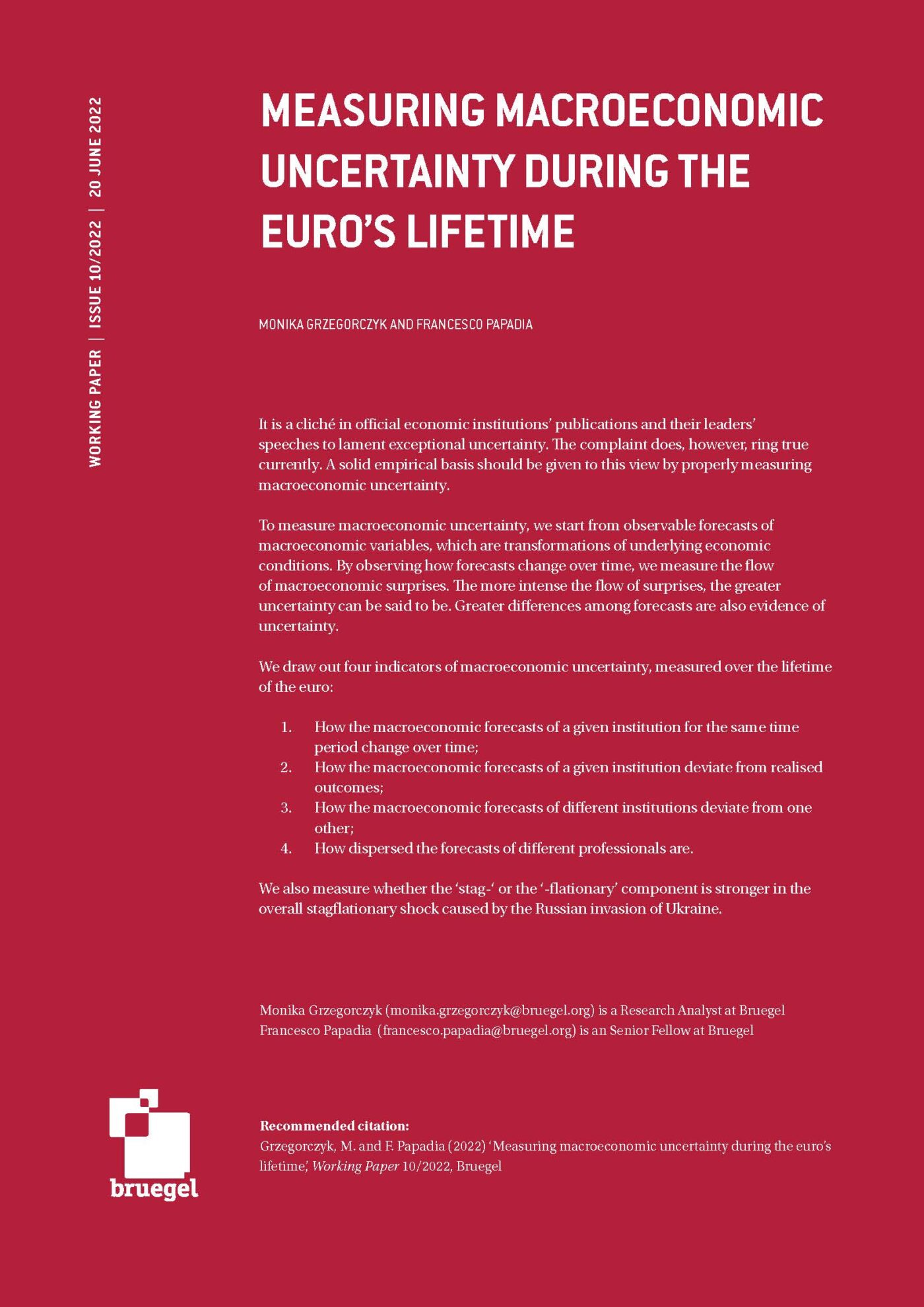Blog Post
Chart of the week: the ECB’s power on Spanish and Italian bond yields
By how much can the ECB influence government bonds yields of Spain and Italy? The answer is ‘very significantly’, as the chart below shows. But the chart also shows that the impacts do not last for too long, as (at least up to July 2012) yields started to increase a few months after the various […]
By how much can the ECB influence government bonds yields of Spain and Italy? The answer is ‘very significantly’, as the chart below shows. But the chart also shows that the impacts do not last for too long, as (at least up to July 2012) yields started to increase a few months after the various measures.
2-year and 10-year maturity government bond yields of Spain, Italy, and Germany, 2 January 2010 – 8 October 2012
Source: Datastream (yields) and ECB (dates); see the links to various announcements in the main text.
While it is impossible to isolate the direct impact of ECB measures, because various other decisions and events also shape market reactions, the chart does indicate that several major ECB announcements were followed by strong market reactions. An earlier post by Chiara Angeloni looked at the yield developments after four major events in 2012. Here we take a longer perspective by looking at various ECB announcements since 2010. The vertical lines (with capital letters on top) indicate the following dates:
A. 7 May 2010: The Heads of State of the euro area countries grant a support package for Greece. This Summit was followed by the extraordinary Economic and Financial Affairs (ECOFIN) Council meeting on 9 May 2010, endorsing “measures to preserve financial stability in Europe”, including financial assistance facilities, with a total volume of up to € 500 billion. The ECB announcement of the Securities Markets Programme (SMP), which aimed to normalise government bond yields in the name of monetary transmission, came a day later on 10 May 2010.
· There was a spike in yields the days before, but the Euro Summit, ECOFIN and ECB announcements tempered the markets. In another Bruegel post, Guntram Wolff and Chiara Angeloni found that among the five major Euro Summits, the May 2010 had the largest impact on Spanish and Italian yields – which was possibly reinforced by the SMP announcement of the ECB. But they found that at the other major Euro Summits there was no systematic improvement in the bond yields, so we see no need to indicate their dates in our chart.
B. 29 November 2010: The Eurogroup and ECOFIN announce a financial assistance programme to Ireland.
· This was not an ECB announcement, but we included it in our chart because after the announcement of the Irish programme, Spanish and Italian bond markets seem to have calmed for some time.
C. 7 August 2011: The ECB “welcomes the announcements made by the governments of Italy and Spain concerning new measures and reforms” and declares that “the ECB will actively implement its Securities Markets Programme”
· Market yields fell significantly, both at the 2-year and 10-year maturities.
D. 19 September 2011: The ECB reduces weekly purchases through the SMP
· There was no particular announcement of ECB intentions, but weekly purchases slowed down after 19 September 2011. In the six weeks up to 19 September 2011, the stock of SMP holdings increased by (in € bn) 22, 14.5, 5, 13.5, 14, and 9.5, respectively. But after 19 September 2011, the weekly changes in SMP holdings were (in € bn) 4, 4, 2.5, 2, 4.5, and 4, respectively. After that, when yields increased significantly (see the chart), the weekly change in SMP holdings increased to € 9.5 bn during the week 7 November 2011. Yet it could not calm the markets.
E. 6 October 2011: The ECB announces the 2nd Covered Bond Purchasing Programme (CBBP), amounting to €40 billion.
· This was the second ‘quantitative easing programme’ of the ECB, whereby the ECB started to purchase private sector securities (the first CBBP, amounting to €60 billion, run from September 2009 to June 2010). The CBBP did not trigger a positive reaction in government bond yields.
F. 8 December 2011: The ECB announces measures to support bank lending and money market activity, including two longer-term refinancing operations (LTROs) with a maturity of 36 months (the first operation is to be allotted on 21 December 2011, the second on 29 February 2012). Around this date, the ECB reduced again weekly purchases through the SMP.
· This announcement contributed to a sharp fall in bond yields, despite the reduction in SMP purchases. Some commentators speculated that banks entered a carry trade, whereby they borrowed from the ECB at 1% interest rate and purchased higher yielding Spanish and Italian bonds.
G. 29 February 2012: The second 3-year LTRO
· The second 3-year LTRO further pushed down the borrowing costs of Spain and Italy.
H. 22 March 2012: ECB’s President Draghi says the “worst of euro zone crisis over”.
· Well, looking at what happened some weeks later, the worst of the euro zone crisis was clearly not over. Yet President Draghi also said that “but there are still risks”, and called governments to act, which proved to be insufficient: “Investor confidence is returning and the ECB hasn’t had to buy government bonds as a support for weeks. The ball is in the governments’ court. They must make the euro zone crisis-proof for the long-term.”
I. 26 Jul 2012: ECB’s President Draghi’s speech on a new bond purchasing programme.
· This speech acted like a magic wand: bond yields fell sharply without any actual intervention. The widely quoted sentences had an impact: “Within our mandate, the ECB is ready to do whatever it takes to preserve the euro. … To the extent that the size of these sovereign premia hampers the functioning of the monetary policy transmission channel, they come within our mandate.”
J. 6 Sep 2012: The ECB’s announces the new bond purchasing programme, called Outright Monetary Transactions (OMTs), which will be unlimited in principle, will treat the ECB pari passu with other creditors, and will be based on clear conditionality (see our earlier post for a comparison of SMP and OMT and an assessment of the criticisms of the OMT here).
· The actual announcement helped further.
Therefore, some ECB announcements had strong impacts on the government bond markets, but for not too long. Only time will tell the medium term impact of the most recent announcement of the OMT, which will primarily depend on the progress with other aspects of the euro-crisis. Since 6 September 2012, Spanish and Italian yields have increased somewhat, but they remained broadly at their level of early 2011. The current 2-year yields of about 2.4% for Italy and 3.2% for Spain look reasonable, but there would be scope for reduction in the 10-year yields, which currently are about 6% for Spain. How could this be done? For Spain, the application for a full macroeconomic adjustment programme would bring clarity and allow the ECB to prove that the OMT is real. Thereby, the application would help to lower longer maturity rates as well and therefore Spain may not need to draw much from the borrowing facility, but could continue to borrow from the market. The Spanish application would likely have a positive impact on Italy, yet domestic developments, such as progress with the reforms, the economic performance and the political outlook for the next election, will be crucial.
Republishing and referencing
Bruegel considers itself a public good and takes no institutional standpoint. Anyone is free to republish and/or quote this post without prior consent. Please provide a full reference, clearly stating Bruegel and the relevant author as the source, and include a prominent hyperlink to the original post.







